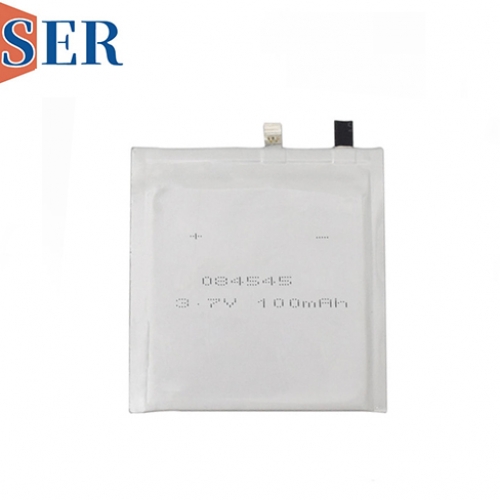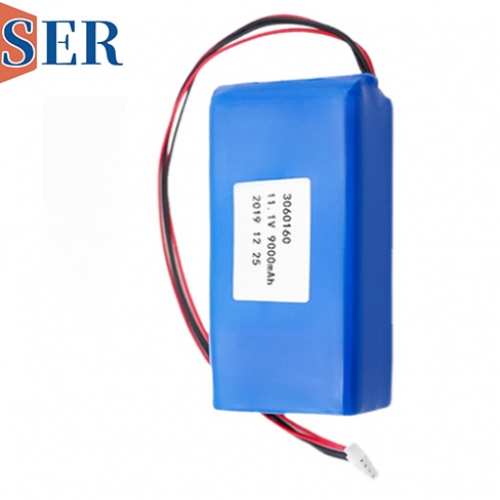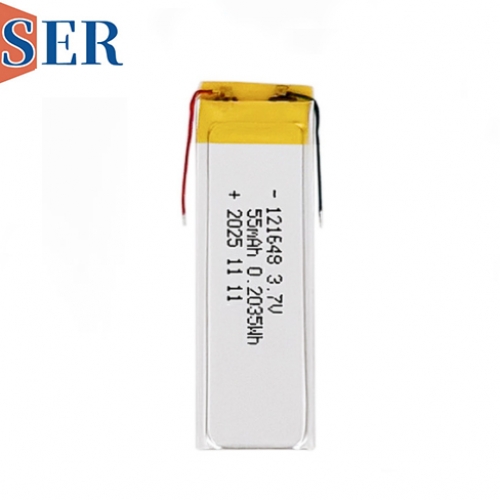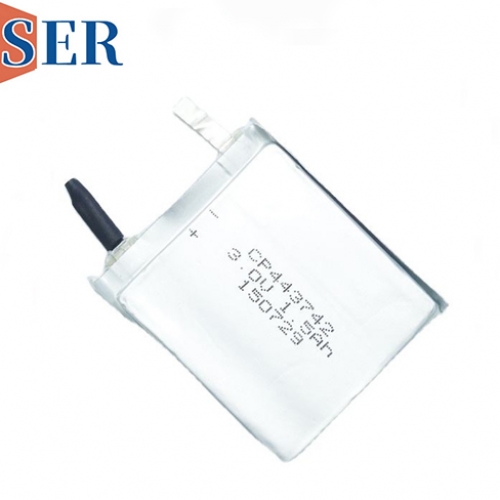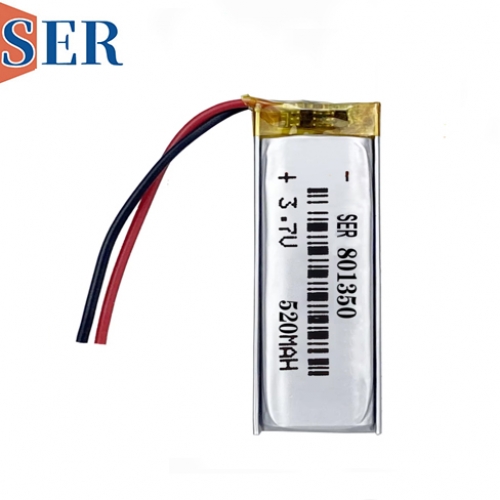High-Temperature Lithium Batteries: Characteristics, Types, and Performance Analysis
High-Temperature Lithium Batteries: Characteristics, Types, and Performance Analysis
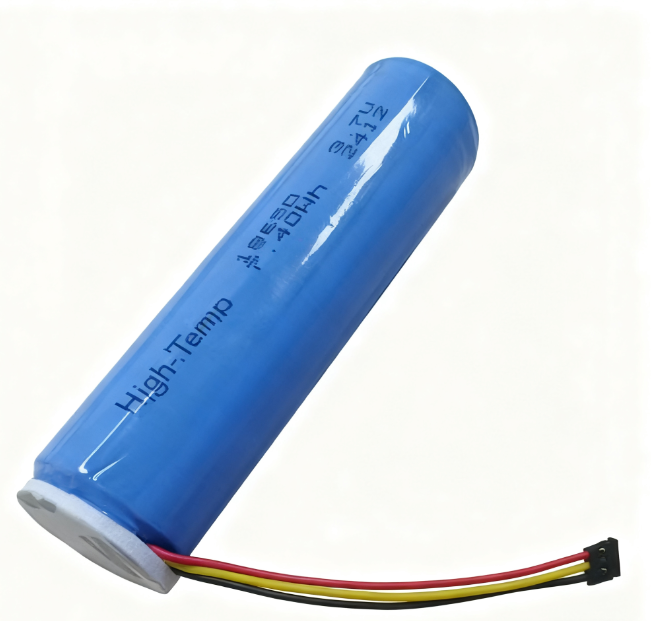
In the era of rapid technological advancement, lithium batteries have become the core energy storage solution for countless devices, from consumer electronics to industrial equipment. However, one critical question persists in many application scenarios: Are lithium batteries resistant to high temperatures? The answer lies in the design, materials, and processing of the batteries. Generally, lithium batteries require special treatment to withstand high temperatures; those intended for use below 100°C do not need specialized design. Through targeted improvements to raw materials and internal structures, the usability of lithium batteries can be enhanced, enabling them to operate reliably in high-temperature environments. This article delves into the types of high-temperature lithium batteries, their performance characteristics, application fields, and key considerations, providing a comprehensive overview for both industrial users and researchers.
1. Fundamental Understanding: High-Temperature Battery
Lithium batteries, by default, have limited tolerance to extreme temperatures. The standard operating temperature range for most commercial lithium batteries is between 0°C and 40°C. Beyond this range, their capacity, cycle life, and safety can be significantly compromised. For instance, at temperatures above 60°C, the electrolyte inside a lithium battery may decompose, leading to gas generation, swelling, or even thermal runaway. At extremely low temperatures, the ion mobility in the electrolyte decreases, resulting in reduced discharge capacity.
However, specialized high-temperature lithium batteries overcome these limitations through three core modifications:
Raw Material Optimization: Using high-temperature-resistant electrolytes (e.g., ionic liquids or flame-retardant polymer electrolytes) instead of traditional organic solvents, which are prone to evaporation or combustion at high temperatures.
Internal Structure Design: Incorporating ceramic-coated separators that resist melting at high temperatures (up to 150°C or higher) and stable electrode materials (e.g., modified lithium iron phosphate or lithium manganese oxide) that maintain structural integrity under heat stress.
Manufacturing Process Control: Implementing strict quality control during cell assembly, such as hermetic sealing to prevent electrolyte leakage and precise electrode coating to ensure uniform current distribution.
Notably, high-temperature lithium batteries are not designed for arbitrary heat exposure. Even the most robust models undergo testing at extreme temperatures (200°C, 500°C, or 800°C) for safety validation, but these conditions are far beyond daily use scenarios. In practical applications, factors like overcharging, excessive discharge, or physical damage (e.g., bending of battery cells in smart devices) can still lead to overheating and failure. For example, some smart device batteries, which are designed with flexibility, include 50 safety monitoring procedures; if the bending degree exceeds 50 degrees during use, the internal temperature may rise abnormally, posing risks. Additionally, regardless of usage frequency, the lifespan of lithium batteries is typically 2–3 years due to gradual material degradation, highlighting the need for proper maintenance and replacement cycles.
2. Non-Rechargeable High-Temperature Lithium Batteries: Longevity and Extreme Environment Adaptability
Non-rechargeable (primary) high-temperature lithium batteries are designed for applications requiring long-term reliability in harsh environments, where recharging is impractical or impossible. Two primary types dominate this category: LiSOCl₂ battery (Lithium-Thionyl Chloride) and LiMnO₂ batteries (Lithium-Manganese Dioxide), along with high-temperature lithium iron phosphate (LFP) batteries. These batteries excel in high energy density, wide temperature ranges, and long storage life.
2.1 LiSOCl₂ Batteries: The Gold Standard for Extreme High Temperatures
LiSOCl₂ batteries are widely recognized as the most versatile non-rechargeable high-temperature lithium batteries, with a working temperature range that typically extends from -55°C to 150°C (and even up to 175°C for specialized variants). Their popularity stems from three key advantages:
Exceptional Energy Density: With a specific energy of 500–600 Wh/kg, LiSOCl₂ batteries outperform most other primary lithium chemistries, making them ideal for low-power, long-duration devices (e.g., sensors that operate for 5–10 years on a single charge).
Long Storage Life: Their self-discharge rate is extremely low (less than 1% per year at room temperature), allowing them to be stored for up to 10 years without significant capacity loss. This is critical for emergency equipment or devices deployed in remote locations.
High Operating Voltage: The nominal voltage of LiSOCl₂ batteries is 3.6V, which is higher than many other primary batteries. This eliminates the need for multiple cells in series, reducing device size and complexity.
Key Applications:
LiSOCl₂ batteries are indispensable in industries such as oil and gas, mining, and aerospace. For example:
Downhole Exploration: In oil wells, where temperatures can exceed 125°C and depths reach thousands of meters, LiSOCl₂ batteries power MWD (Measurement While Drilling) and LWD (Logging While Drilling) devices, providing real-time data on wellbore conditions.
Mining Equipment: Mine sensors and communication devices, which operate in dusty, high-temperature (up to 100°C) environments, rely on LiSOCl₂ batteries for continuous, maintenance-free operation.
Aerospace and Defense: Satellite backup systems and military field equipment use LiSOCl₂ batteries for their ability to withstand extreme temperature fluctuations (from -55°C in space to 85°C on the ground) and long storage periods.
2.2 LiMnO₂ Batteries: A Balanced Choice for Moderate High Temperatures
LiMnO₂ batteries, while not as heat-resistant as LiSOCl₂ variants, offer reliable performance in temperatures ranging from -20°C to 85°C. They are characterized by:
Stable Discharge Curve: The voltage remains relatively constant throughout the discharge cycle, ensuring consistent performance for devices sensitive to voltage drops (e.g., medical monitors or industrial controllers).
Low Cost and Safety: Compared to LiSOCl₂ batteries, LiMnO₂ batteries are more economical and have a lower risk of electrolyte leakage, making them suitable for consumer and industrial applications where cost is a priority.
Moderate Energy Density: With a specific energy of 280–320 Wh/kg, they are sufficient for devices with moderate power demands (e.g., wireless thermostats or smoke detectors).
Key Applications:
LiMnO₂ batteries are commonly used in:
Consumer Electronics: Wireless remote controls, digital thermometers, and electronic toys that may be exposed to warm indoor temperatures (up to 40°C) or occasional outdoor use.
Industrial Sensors: Temperature and pressure sensors in manufacturing plants, where operating temperatures rarely exceed 85°C and long-term reliability is required.
2.3 High-Temperature Lithium Iron Phosphate (LFP) Batteries: Specialized for Ultra-High Temperatures
High-temperature LFP batteries are a niche subset of non-rechargeable lithium batteries, designed for extreme heat environments. They are classified into five temperature grades based on their maximum operating temperature: 100°C, 125°C, 150°C, 175°C, and 200°C. Unlike standard LFP batteries (which are typically rechargeable), non-rechargeable high-temperature LFP variants prioritize heat resistance over cycle life.
Their key features include:
Ultra-High Temperature Tolerance: The modified LFP cathode material and heat-resistant electrolyte allow these batteries to operate reliably at temperatures up to 200°C, making them suitable for applications like industrial ovens or high-temperature testing equipment.
Chemical Stability: LFP materials have a stable crystal structure, reducing the risk of thermal runaway even at extreme temperatures. This safety advantage makes them preferred for devices where fire hazards are a major concern.
Key Applications:
High-temperature LFP batteries are used in:
Industrial Heating Equipment: Sensors and controllers in kilns or furnaces, where temperatures often exceed 150°C.
Automotive Under-the-Hood Systems: Some specialized automotive sensors (e.g., exhaust gas sensors) that are exposed to high temperatures (up to 125°C) use non-rechargeable high-temperature LFP batteries for power.
3. Rechargeable High-Temperature Lithium Batteries: Cycle Life and Versatility
Rechargeable (secondary) high-temperature lithium batteries are designed for applications requiring repeated use in warm or hot environments. The two most prominent types are lithium polymer (LiPo) batteries and high-temperature lithium nickel cobalt manganese oxide (NCM, commonly known as ternary lithium) batteries. These batteries balance heat resistance with cycle life, making them suitable for consumer electronics, electric vehicles (EVs), and industrial devices.
3.1 Lithium Polymer (LiPo) Batteries: Flexibility and Moderate Heat Resistance
LiPo batteries are widely used in portable devices due to their thin, flexible form factor and moderate high-temperature performance. Their standard operating temperature range is -20°C to 70°C, but specialized high-temperature variants can withstand up to 80°C for short periods.
Performance Characteristics:
Form Factor Versatility: LiPo battery can be manufactured in ultra-thin (as thin as 0.3mm) or irregular shapes, making them ideal for slim devices like smartwatches, wireless earbuds, and foldable phones.
Capacity Sensitivity to Temperature: While LiPo batteries perform well within their standard temperature range, exposure to temperatures above 70°C or below -20°C leads to significant capacity loss. For example, at 80°C, the discharge capacity may drop by 30–50% compared to room temperature. Prolonged exposure to high temperatures also degrades the internal polymer electrolyte, reducing cycle life from the typical 300–500 cycles to less than 200 cycles.
Safety Considerations: High-temperature LiPo batteries require strict safety measures, such as built-in protection circuits (PCM) to prevent overcharging, over-discharging, and short circuits. Physical damage (e.g., punctures or bending) can cause the electrolyte to leak or ignite, especially at high temperatures.
Key Applications:
High-temperature LiPo batteries are used in:
Portable Consumer Electronics: Smartphones, tablets, and portable Bluetooth speakers that may be used in warm outdoor environments (e.g., beaches or summer festivals) where temperatures reach 40–50°C.
Wearable Devices: Fitness trackers and smart glasses, which are in close contact with the human body (37°C) and may be exposed to sunlight, requiring moderate heat resistance.
3.2 High-Temperature Ternary Lithium (NCM) Batteries: Wide Temperature Range and High Energy Density
Ternary lithium (NCM) batteries are known for their high energy density and wide operating temperature range, making them a popular choice for EVs, energy storage systems (ESS), and industrial devices. Their standard working temperature range is 0°C to 40°C, but high-temperature variants can operate at 50–60°C with minimal performance loss.
Performance Characteristics:
Broad Temperature Adaptability: Ternary lithium batteries can tolerate temperatures from -30°C to 60°C, with some specialized models extending to 80°C. Their ion mobility remains relatively high at low temperatures, and the NCM cathode material maintains stability at moderate high temperatures.
Thermal Behavior: While ternary lithium batteries are more heat-resistant than standard LiPo batteries, they have a lower thermal runaway threshold compared to LFP batteries. The heat-resistant temperature of ternary lithium materials is around 200°C; when this temperature is exceeded, the cathode undergoes violent chemical reactions, and the electrolyte burns rapidly, posing significant safety risks. Additionally, during charging or high-current discharge, the battery may generate heat—for example, EV batteries can reach 50–60°C during fast charging, requiring active thermal management systems.
Cycle Life: High-temperature ternary lithium batteries typically offer 300–500 charge-discharge cycles, with capacity retention of 70% after 500 cycles. However, operating the battery above 60°C for extended periods can reduce cycle life by 20–30%.
Key Applications:
High-temperature ternary lithium batteries are widely used in:
Electric Vehicles (EVs): Many EV manufacturers use high-temperature NCM batteries in their models, paired with cooling systems to maintain temperatures within the optimal range (25–40°C) during operation.
Energy Storage Systems (ESS): ESS deployed in warm climates (e.g., deserts or tropical regions) use high-temperature ternary lithium batteries to store solar energy, as they can withstand daytime temperatures of 40–50°C.
Industrial Robots: Robots operating in manufacturing plants with high ambient temperatures (up to 50°C) rely on high-temperature ternary lithium batteries for continuous power.
4. Comparison of High-Temperature Lithium Battery Types and Selection Guidelines
Choosing the right high-temperature lithium battery depends on several factors: application temperature range, power requirements, rechargeability needs, and safety considerations. The table below summarizes the key characteristics of the four main types discussed:
Selection Guidelines:
Non-Rechargeable vs. Rechargeable: Choose non-rechargeable batteries (LiSOCl₂, LiMnO₂) for long-term, low-power applications in extreme environments (e.g., downhole sensors). Choose rechargeable batteries (LiPo, ternary lithium) for devices requiring repeated use (e.g., EVs, smartphones).
Temperature Range: For applications above 150°C (e.g., industrial ovens), select non-rechargeable high-temperature LFP batteries. For 85–150°C (e.g., mining equipment), LiSOCl₂ batteries are optimal. For 40–85°C (e.g., portable electronics), LiPo or ternary lithium batteries work well.
Safety Requirements: In high-risk environments (e.g., hospitals, oil refineries), prioritize batteries with high chemical stability (LiSOCl₂, LFP) to minimize fire risks.
Cost and Scalability: For consumer applications (e.g., wireless earbuds), LiPo batteries are cost-effective. For industrial-scale projects (e.g., EV fleets), ternary lithium batteries offer a balance of performance and scalability.
5. Future Trends and Challenges in High-Temperature Lithium Batteries
The demand for high-temperature lithium batteries is growing rapidly, driven by the expansion of EVs, industrial automation, and renewable energy systems. To meet this demand, researchers and manufacturers are focusing on three key areas of innovation:
Material Innovation: Developing new electrode materials (e.g., high-nickel NCM for ternary lithium batteries, modified LFP for ultra-high temperatures) and electrolytes (e.g., solid-state electrolytes) to improve heat resistance and energy density. Solid-state electrolytes, which replace liquid or polymer electrolytes with solid materials (e.g., ceramics or glass), can withstand temperatures above 200°C and eliminate the risk of electrolyte leakage.
Thermal Management Systems: Integrating advanced cooling and heating systems into battery packs to maintain optimal temperatures. For example, EV battery packs use liquid cooling or heat pumps to keep batteries within 25–40°C, even in extreme weather conditions.
Safety Standards: Establishing global safety standards for high-temperature lithium batteries to ensure consistent performance and reduce risks. Organizations like the International Electrotechnical Commission (IEC) and Underwriters Laboratories (UL) are developing new testing protocols for high-temperature operation and thermal runaway prevention.
Despite these advancements, challenges remain:
Cost: Specialized materials (e.g., solid-state electrolytes) and manufacturing processes increase the cost of high-temperature lithium batteries, limiting their adoption in low-cost consumer applications.
Cycle Life at High Temperatures: Even with improvements, rechargeable high-temperature lithium batteries still have shorter cycle lives than their room-temperature counterparts, requiring more frequent replacements.
Environmental Impact: The production and disposal of high-temperature lithium batteries (especially those containing rare metals like cobalt in ternary lithium batteries) pose environmental challenges, highlighting the need for recycling and sustainable material sourcing.
6. Conclusion
High-temperature lithium batteries are a critical enabler of modern technology, powering devices in environments from deep oil wells to scorching deserts.

